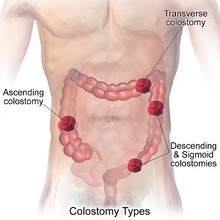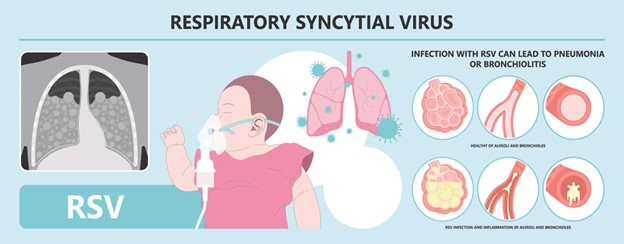A nurse is reinforcing teaching with another nurse about how to change an ostomy appliance for a client who has a sigmoid colostomy.
Which of the following instructions should the nurse include in the teaching?
Create an opening on the skin barrier that is 1.27 cm (0.5 in) larger than the client's stoma
Use a moisturizing soap to clean the skin around the client's stoma
Empty the client's ostomy pouch before removing the skin barrier
Change the client's ostomy appliance 1 hr after breakfast
Correct Answer : C
A. Create an opening on the skin barrier that is 1.27 cm (0.5 in) larger than the client's stoma. The opening on the skin barrier should be cut to fit closely around the stoma, approximately 0.3-0.6 cm (1/8 to 1/4 inch) larger than the stoma size. A larger opening (like 0.5 inches) could expose too much surrounding skin, increasing the risk of skin irritation from contact with the stoma's effluent.
B. Use a moisturizing soap to clean the skin around the client's stoma. Moisturizing soaps should be avoided because they can leave a residue on the skin, which may interfere with the adhesion of the ostomy appliance. The skin around the stoma should be cleaned with mild soap and water, or water alone, and then dried thoroughly before applying the new appliance.
C. Empty the client's ostomy pouch before removing the skin barrier. Emptying the ostomy pouch before removing the skin barrier is a practical step to reduce spillage of stool during the appliance change, making the process cleaner and easier to manage. It also minimizes the risk of contamination of the surrounding area or wound.
D. Change the client's ostomy appliance 1 hour after breakfast. Ostomy appliances are best changed when the bowel is least active, which is usually before a meal or several hours after eating. Changing the appliance shortly after a meal, such as 1 hour after breakfast, may result in more stoma output, making it harder to manage the appliance change.

Nursing Test Bank
Naxlex Comprehensive Predictor Exams
Related Questions
Correct Answer is D
Explanation
Budesonide is a corticosteroid inhaler used for long-term management of asthma. It helps to reduce inflammation and prevent asthma symptoms. Rinsing the mouth and gargling with water after using a corticosteroid inhaler can help reduce the risk of developing oral thrush, a fungal infection.
The other statements are incorrect and indicate a misunderstanding of the teaching: "I will take my inhaler treatment before each meal and at bedtime": Budesonide is not typically used before meals or at bedtime. It is usually taken on a regular schedule, as prescribed by the healthcare provider, to provide long-term control of asthma symptoms.
Using the inhaler before exercising is important because physical activity can trigger asthma symptoms in some individuals. By using the inhaler before exercise, the client can help prevent exercise-induced asthma symptoms. However, this depends on the degree of difficulty of the exercise.
"I should use my inhaler when I have an asthma attack": Budesonide is not a rescue inhaler for immediate relief of asthma symptoms during an asthma attack. It is a controller medication meant to be used regularly to prevent symptoms from occurring.
Correct Answer is A
Explanation
RSV is primarily transmitted through respiratory droplets when an infected person coughs or sneezes. To prevent the spread of RSV, it is important to implement droplet precautions. These precautions include wearing a mask and ensuring proper hand hygiene when in contact with the preschooler.
This helps minimize the risk of transmitting the virus to other individuals. Requesting an x-ray of the preschooler's neck is not indicated for RSV. RSV primarily affects the respiratory system, and an x-ray of the neck would not provide relevant information for the diagnosis or management of RSV.
Monitoring the preschooler's urine for protein is not specifically related to RSV. Proteinuria is not a typical manifestation or complication of RSV. Monitoring urine for protein is more relevant in conditions such as kidney disease or urinary tract infections.
Administering fluconazole to the preschooler is not indicated for RSV. Fluconazole is an antifungal medication used to treat fungal infections, and it would not be effective against a viral infection like RSV.

Whether you are a student looking to ace your exams or a practicing nurse seeking to enhance your expertise , our nursing education contents will empower you with the confidence and competence to make a difference in the lives of patients and become a respected leader in the healthcare field.
Visit Naxlex, invest in your future and unlock endless possibilities with our unparalleled nursing education contents today
Report Wrong Answer on the Current Question
Do you disagree with the answer? If yes, what is your expected answer? Explain.
Kindly be descriptive with the issue you are facing.
